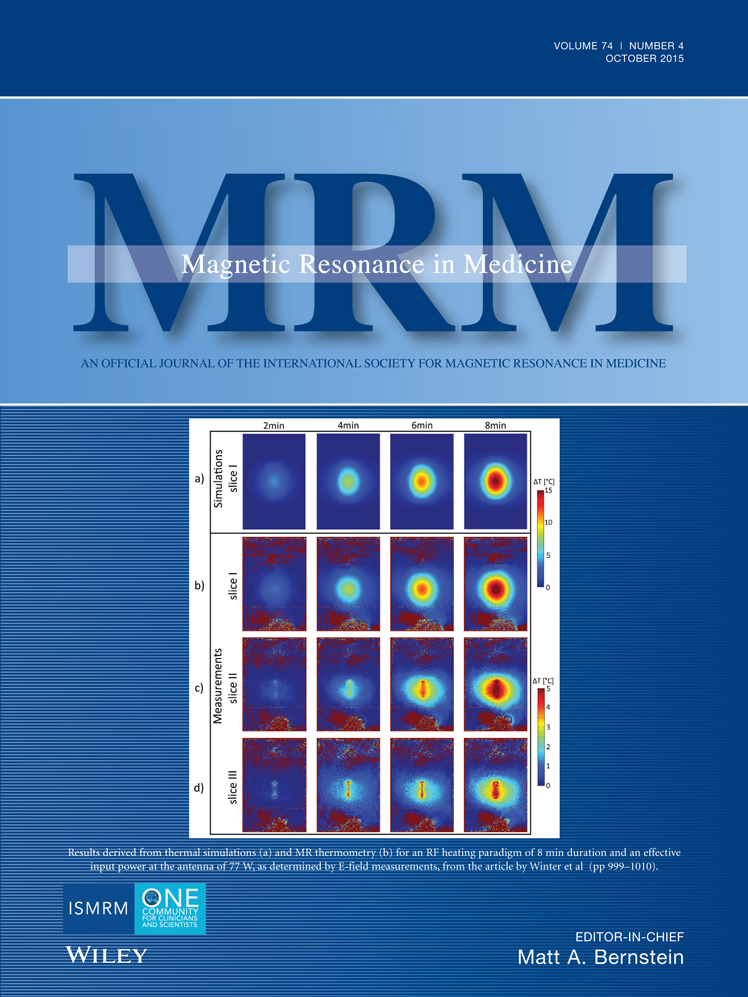Free-breathing combined three-dimensional phase sensitive late gadolinium enhancement and T1 mapping for myocardial tissue characterization
Abstract
Purpose
To develop a novel MR sequence for combined three-dimensional (3D) phase-sensitive (PS) late gadolinium enhancement (LGE) and T1 mapping to allow for simultaneous assessment of focal and diffuse myocardial fibrosis.
Methods
In the proposed sequence, four 3D imaging volumes are acquired with different T1 weightings using a combined saturation and inversion preparation, after administration of a gadolinium contrast agent. One image is acquired fully sampled with the inversion time selected to null the healthy myocardial signal (the LGE image). The other three images are three-fold under-sampled and reconstructed using compressed sensing. An acquisition scheme with two interleaved imaging cycles and joint navigator-gating of those cycles ensures spatial registration of the imaging volumes. T1 maps are generated using all four imaging volumes. The signal-polarity in the LGE image is restored using supplementary information from the T1 fit to generate PS-LGE images. The accuracy of the proposed method was assessed with respect to a inversion-recovery spin-echo sequence. In vivo T1 maps and LGE images were acquired with the proposed sequence and quantitatively compared with 2D multislice Modified Look-Locker inversion recovery (MOLLI) T1 maps. Exemplary images in a patient with focal scar were compared with conventional LGE imaging.
Results
The deviation of the proposed method and the spin-echo reference was < 11 ms in phantom for T1 times between 250 and 600 ms, regardless of the inversion time selected in the LGE image. There was no significant difference in the in vivo T1 times of the proposed sequence and the 2D MOLLI technique (myocardium: 292 ± 75 ms versus 310 ± 49 ms, blood-pools: 191 ± 75 ms versus 182.0 ± 33). The LGE images showed proper nulling of the healthy myocardium in all subjects and clear depiction of scar in the patient.
Conclusion
The proposed sequence enables simultaneous acquisition of 3D PS-LGE images and spatially registered 3D T1 maps in a single scan. Magn Reson Med 74:1032–1041, 2015. © 2014 Wiley Periodicals, Inc.




